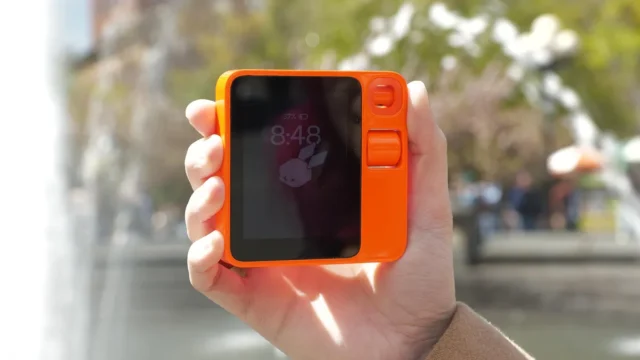In recent years, artificial intelligence has seen explosive growth, particularly in the field of speech recognition and voice processing. Today, intelligent voice assistants are not limited to smartphones or smart speakers – we find them in cars, household devices, and even in professional environments. AI-based voice recognition is one of the key tech trends of 2025, enabling faster, more accurate, and more natural interactions between humans and machines.
This article provides an in-depth look at how modern voice recognition works, the technologies behind it, the market leaders of 2025, and what we can expect in the near future. It offers valuable insights for both beginners and advanced users, including practical examples, tips, and answers to common questions.
A brief history of speech recognition
The concept of machine-based speech recognition dates back to the 1950s, when the first experiments could only recognize a few isolated words. For decades, the technology was extremely limited, plagued by inaccurate results and simple keyword matching.
A major breakthrough came in the mid-2010s with the advent of artificial neural networks and machine learning. Tech giants such as Google, Apple, Microsoft, Amazon, and Meta leveraged massive datasets and cloud computing power to build increasingly sophisticated AI assistants.
By the early 2020s, natural language processing (NLP) and deep learning enabled voice assistants to understand not just words, but context and intent. In 2025, voice interaction has become more than a convenience – it’s a productivity tool and a ubiquitous interface.
How modern AI-based speech recognition works
Modern speech recognition systems rely on a complex technology stack. Here’s how it works:
-
Audio input: A microphone captures the user’s speech.
-
Digitization: The analog signal is converted into a digital format.
-
Acoustic modeling: The system analyzes phonemes and sound patterns.
-
Language modeling: It interprets grammar and sentence structure.
-
ASR (Automatic Speech Recognition): Transcribes speech into text using acoustic and language models.
-
NLP processing: Identifies user intent and contextual meaning.
-
Response generation: The AI responds via voice, text, or by performing an action.
Top AI voice assistants of 2025
These are the leading voice assistants on the market in 2025:
1. Google Assistant
-
Language support: 50+ languages
-
Strengths: Excellent integration with Google search, smooth conversation flow
-
New in 2025: Multimodal responses (voice, image, gestures)
2. Amazon Alexa
-
Focus: Smart home and e-commerce
-
Strengths: Wide device support, extensible “skills” system
-
2025 update: Proactive suggestions for home automation
3. Apple Siri
-
Strong integration with Apple ecosystem
-
2025 feature: “Context Aware Siri” – understands recent user actions and context
4. Microsoft Copilot Voice
-
Emerging player in voice AI
-
Fully integrated into Microsoft 365
-
Ideal for business users: meeting scheduling, email dictation
5. ChatGPT Voice
-
Based on OpenAI’s GPT-4 Turbo
-
Multimodal, highly contextual assistant
-
Available on both Android and iOS
6. Gemini Assistant (Google DeepMind)
-
Complex, context-sensitive conversations
-
Combines search, content generation, and proactive suggestions
Key areas of use
Smart devices and smart homes
-
Voice control of lights, thermostats, locks
-
Routines: “Good morning” triggers lights, coffee machine, news
Cars
-
Tesla, BMW, and Mercedes offer built-in voice assistants
-
Control navigation, calls, music, and climate settings by voice
Customer service
-
Voice assistants combined with chatbots offer 24/7 support
-
Automatic identity verification and question routing
Education and learning
-
Voice-based interaction with study materials
-
Real-time translation and language learning
Benefits and challenges
Benefits:
-
Fast and convenient interactions
-
Accessibility for users with disabilities
-
Time-saving for repetitive tasks
Challenges:
-
Accuracy issues with dialects or accents
-
Data privacy concerns – who is listening?
-
Multi-user confusion – recognizing individual intent
Practical tips for effective usage
-
Train your assistant: Many systems adapt over time based on your usage.
-
Use routines: Automate frequent commands for efficiency.
-
Check language settings: Optimize for your region and dialect.
-
Mute when unnecessary: For better privacy, pause listening when not needed.
-
Use earbuds in public: Prevent exposing sensitive information aloud.
Future trends
-
Multimodal assistants: Capable of understanding images, gestures, and tone of voice.
-
Emotion detection: AI that senses your mood and adjusts accordingly.
-
Offline processing: Speech recognition happens locally, without data upload.
-
Language equity: More support for smaller languages and dialects.
-
Personal AI avatars: Highly personalized assistants that evolve with you
Frequently asked questions (FAQ)
Which assistant is best for the Hungarian language?
Currently, Google Assistant has the best support for Hungarian, but ChatGPT Voice and Siri are improving steadily.
Can these assistants work offline?
Most are still cloud-based, but Google and Apple are developing partial offline capabilities.
Are these assistants secure?
Major tech companies implement strict data security protocols, but it’s also up to users to manage privacy settings properly.
Why doesn’t the assistant understand me sometimes?
Possible causes: background noise, poor microphone, dialect, or incorrect settings.
Conclusion
AI-powered speech recognition in 2025 is no longer science fiction – it’s a practical part of everyday life. Whether you’re at home, on the road, or at work, voice assistants can boost productivity and comfort. While there are still challenges, the trajectory is clear: toward more natural, private, and intelligent voice interactions.
Whether you’re new to this technology or an advanced user, it’s worth experimenting with different platforms to find the one that suits your lifestyle best.
Image(s) used in this article are either AI-generated or sourced from royalty-free platforms like Pixabay or Pexels.
Did you enjoy this article? Buy me a coffee!






